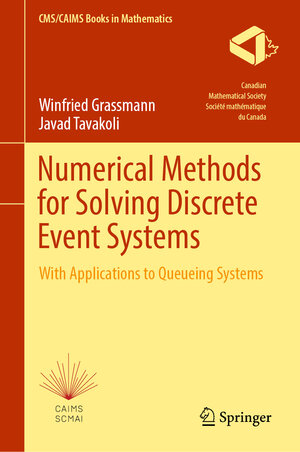
“This monograph is an exciting addition to the queueing/stochastic processes literature,
written by two highly respected senior researchers. … The writing is precise and clear. Well-known models are used as examples to illustrate the methods presented. … It has a huge number of powerful techniques that are not given sufficient focus elsewhere. This may be one of the best books to introduce graduate students … . This monograph is essential for the bookshelf … of every serious queueing theorist.” (Myron Hlynka, Mathematical Reviews, December, 2023)
Numerical Methods for Solving Discrete Event Systems
With Applications to Queueing Systems
von Winfried Grassmann und Javad TavakoliThis graduate textbook provides an alternative to discrete event simulation. It describes how to formulate discrete event systems, how to convert them into Markov chains, and how to calculate their transient and equilibrium probabilities. The most appropriate methods for finding these probabilities are described in some detail, and templates for efficient algorithms are provided. These algorithms can be executed on any laptop, even in cases where the Markov chain has hundreds of thousands of states. This book features the probabilistic interpretation of Gaussian elimination, a concept that unifies many of the topics covered, such as embedded Markov chains and matrix analytic methods.
The material provided should aid practitioners significantly to solve their problems. This book also provides an interesting approach to teaching courses of stochastic processes.




